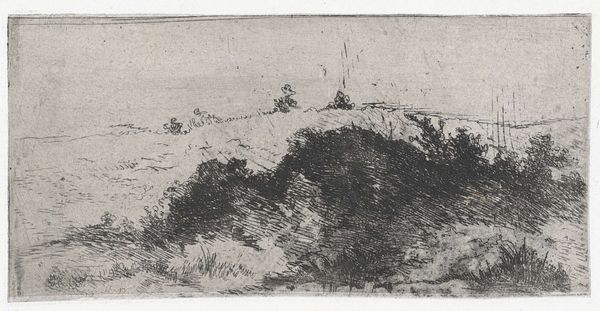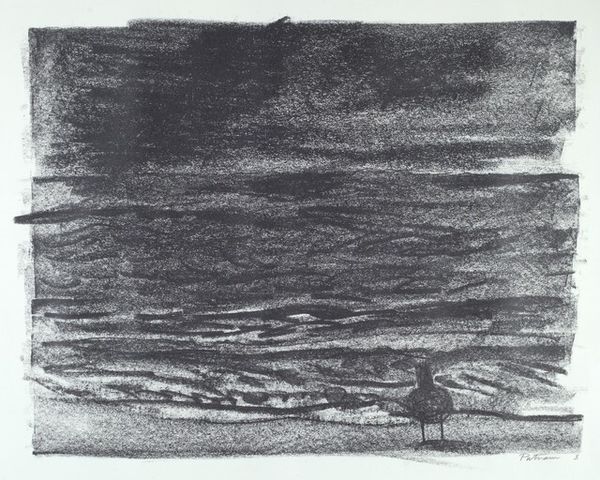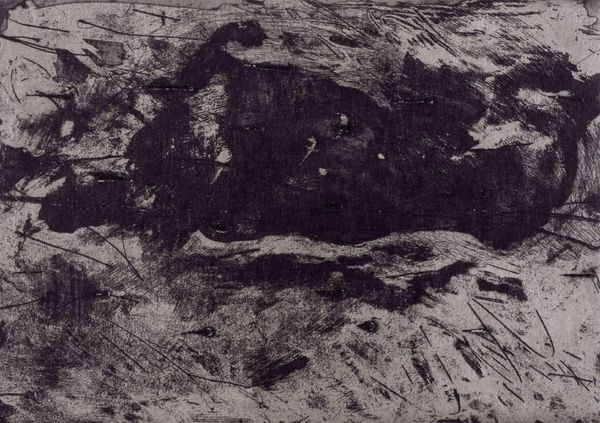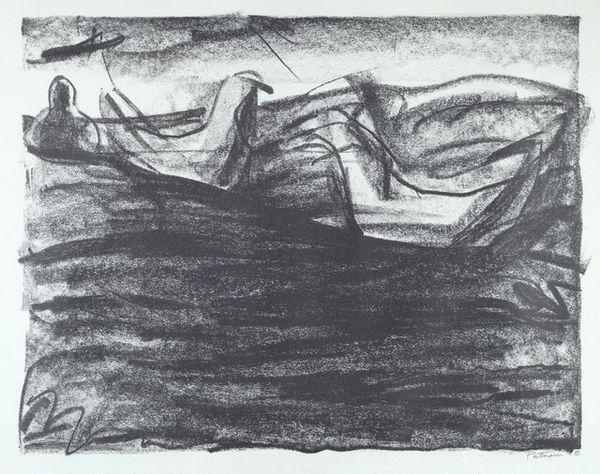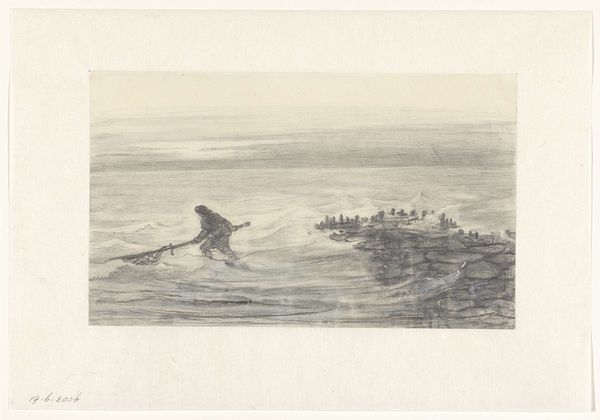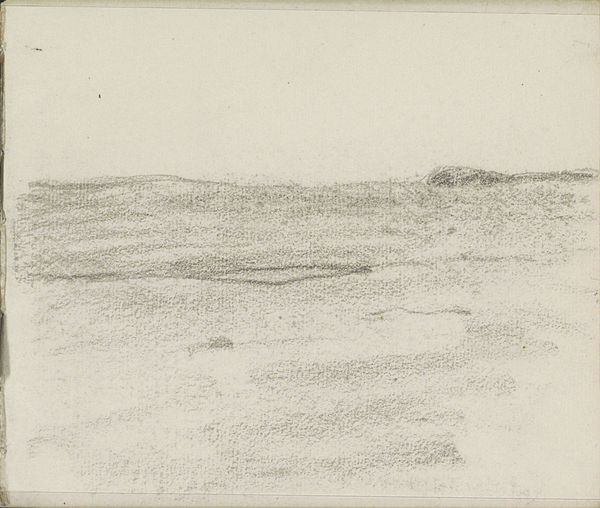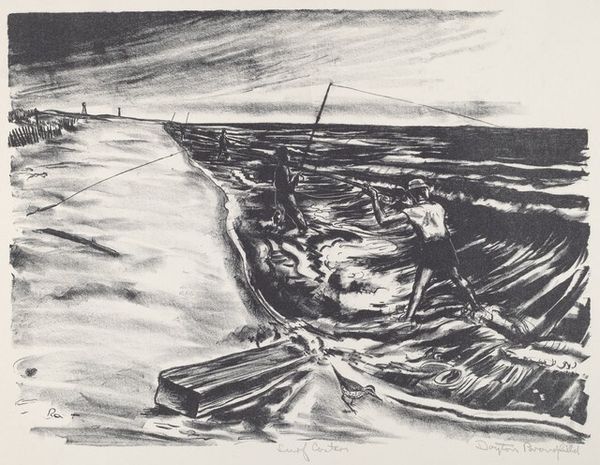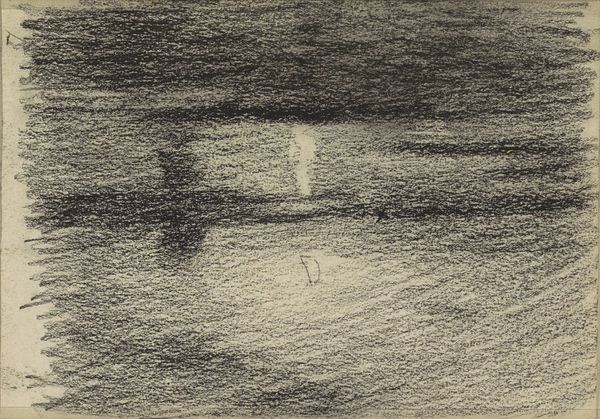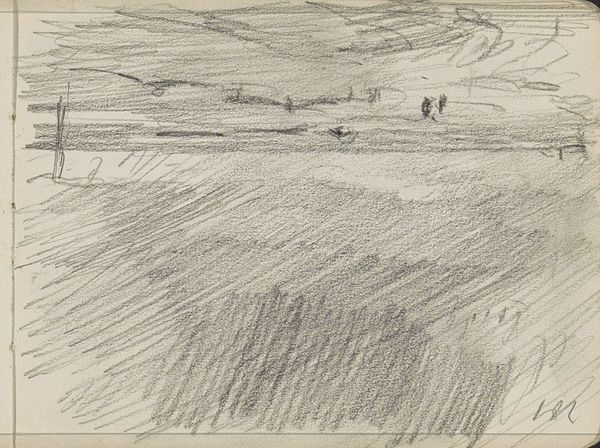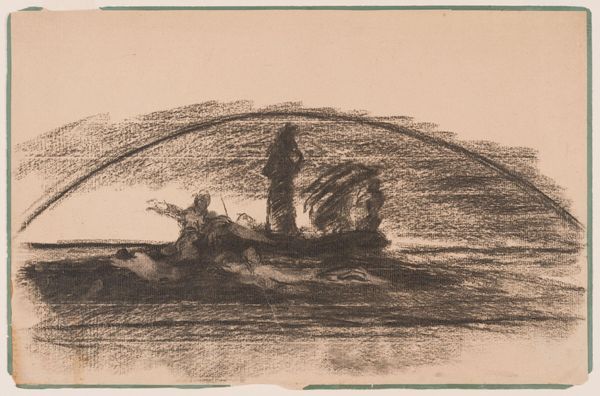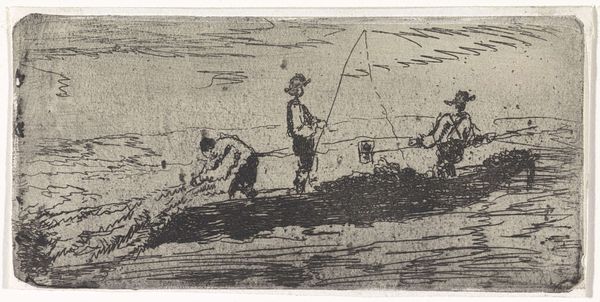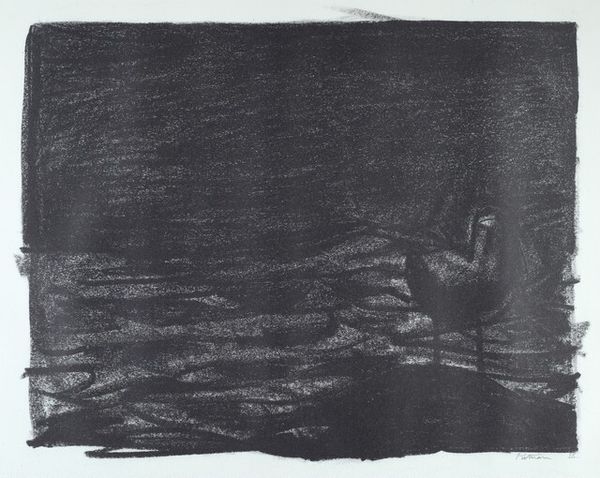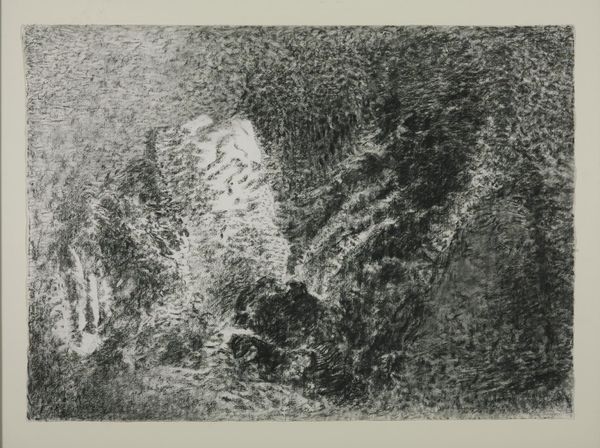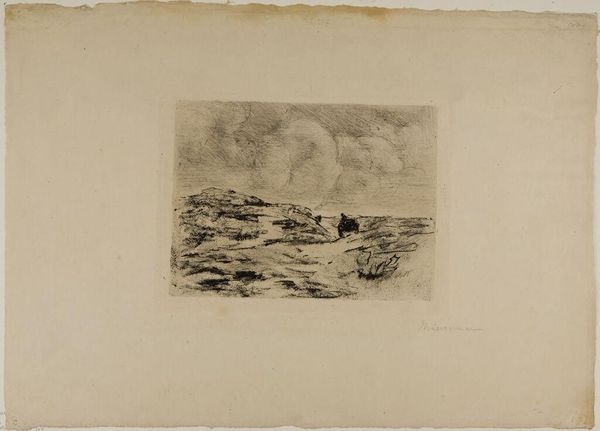
drawing, print, graphite
#
pencil drawn
#
drawing
#
organic
# print
#
pencil sketch
#
landscape
#
graphite
#
organic texture
#
natural form
Copyright: National Gallery of Art: CC0 1.0
Curator: Looking at Wallace Bradstreet Putnam's 1966 drawing, "Sea Bird Saga II," rendered in graphite, what's the first thing that jumps out at you? It really invites interpretation, doesn’t it? Editor: Eerily beautiful! The stark, almost desolate landscape... It’s all heavy graphite, smudged, creating a very unsettling, brooding atmosphere. Are those figures or…sea birds? Are we underwater, perhaps? It feels incredibly mysterious. Curator: Well, the title suggests birds, and Putnam was deeply invested in capturing organic forms, as evidenced by the natural forms represented. The artist uses a restricted palette to produce an incredibly textured landscape. Considering it's from the mid-60s, I'm also wondering if it's a reflection on anxieties surrounding environmental issues beginning to emerge at that time? Editor: It very much could be. This period of intense environmental awareness is definitely reflected in the subject. And how Putnam uses graphite here feels almost sculptural, with light emerging from a densely worked surface. The "saga" aspect gives the feeling of continuity but the undefined landscape can allow the viewer to contemplate all manner of narrative possibilities. I see that it's called 'Sea Bird Saga II.' Does the museum possess part one, or other related artworks? Curator: Sadly not. Unfortunately, tracking artworks, especially works on paper is difficult. And I agree on the sculptural aspect—there is depth, definitely something tactile pulling us in. His rendering style here has something universal. We feel connected, like witnessing a personal tale, even without grasping all its nuances. Putnam had the capability of reaching that fine place where emotion and intellectual concepts converge. Editor: Yes! It lingers in your mind long after you turn away. It also has a wonderful connection to many land artists whose projects share a common thread with the artwork to consider ecological damage to land masses as an outcome of late stage capitalism. It speaks volumes. Thanks for guiding me to see it! Curator: My pleasure, thank you for helping see it differently too! These subtle drawings, though often overlooked, can be some of the most thought-provoking pieces in any collection.
Comments
No comments
Be the first to comment and join the conversation on the ultimate creative platform.
